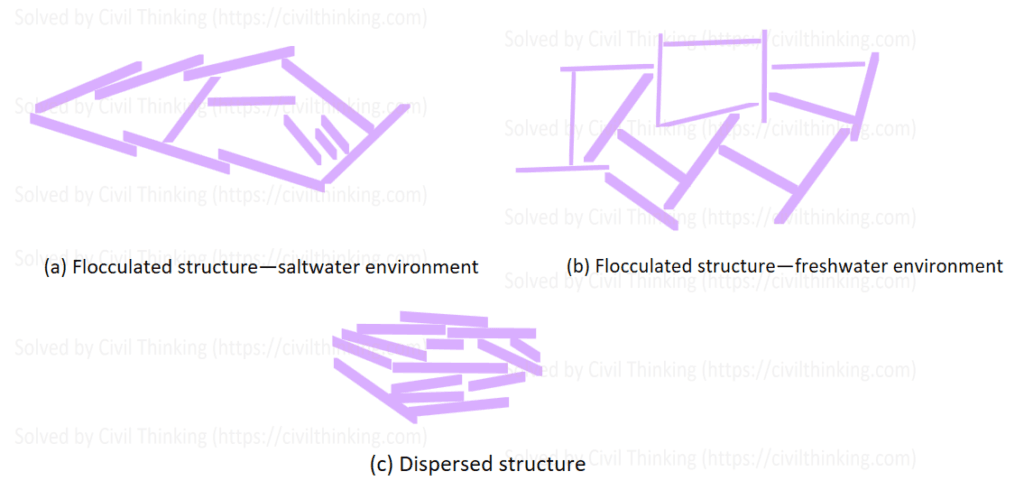1.3.5 Soil Fabric
Soil fabric refers to the structural framework created when soil (mineral) particles come together. Although we assume these particles are rigid, the way they are arranged during deposition determines the soil’s internal “structure” or fabric (see Figure 1.4). Each particle touches its neighbors randomly, and the conditions during deposition—especially the electrochemical environment—strongly influence how this fabric is formed.
There are two common types of fabric in fine-grained soils:
- Flocculated Fabric: In a saltwater environment, many particles tend to align parallel to one another, while in a freshwater environment, they may orient perpendicular to one another.
- Dispersed Fabric: In this type, most particles orient parallel to each other, creating a different structural arrangement.
Any loading on the soil, whether from natural tectonic movements or from buildings, permanently alters its fabric. This means that the history of forces applied to the soil is recorded in its structure—much like how a brain remembers experiences.
The spaces between the mineral particles are called voids. These voids can be filled with water, air, or even cement-like materials (for example, calcium carbonate). They make up a large part of the soil’s volume and are interconnected, forming pathways that allow water to flow in and out. When external loads cause these voids to shrink, the soil compresses (settles). Conversely, if the voids expand, the soil dilates. The amount and rate of settlement depend on how much the void space changes and how interconnected these voids are.
In coarse-grained soils, which are mostly made up of rigid quartz particles, we can think of these particles as tiny spheres. The loosest packing (with the maximum void space) occurs when the spheres are simply stacked one on top of each other (Figure 1.5a), while the densest packing happens when the spheres are arranged in a staggered pattern (Figure 1.5b). In reality, these soils have a random mix of particle sizes and shapes. For example, using basic physics, if we approximate a spherical soil particle with a diameter D (in cm), its mass is given by 2.7 × (πD³/6), and the number of particles per gram of soil is roughly 0.7/D³. Thus, a single gram of fine sand (with D ≈ 0.015 cm) can consist of about 207,400 particles.
In summary, the soil fabric is like the memory of the soil—it shows how the soil was deposited and how it has changed over time under various loads. This structure, together with the void spaces that influence settlement and water flow, is fundamental to understanding soil behavior in engineering.
Below are the referenced diagrams: Fig. 1.4, Fig. 1.5a, and Fig. 1.5b.


